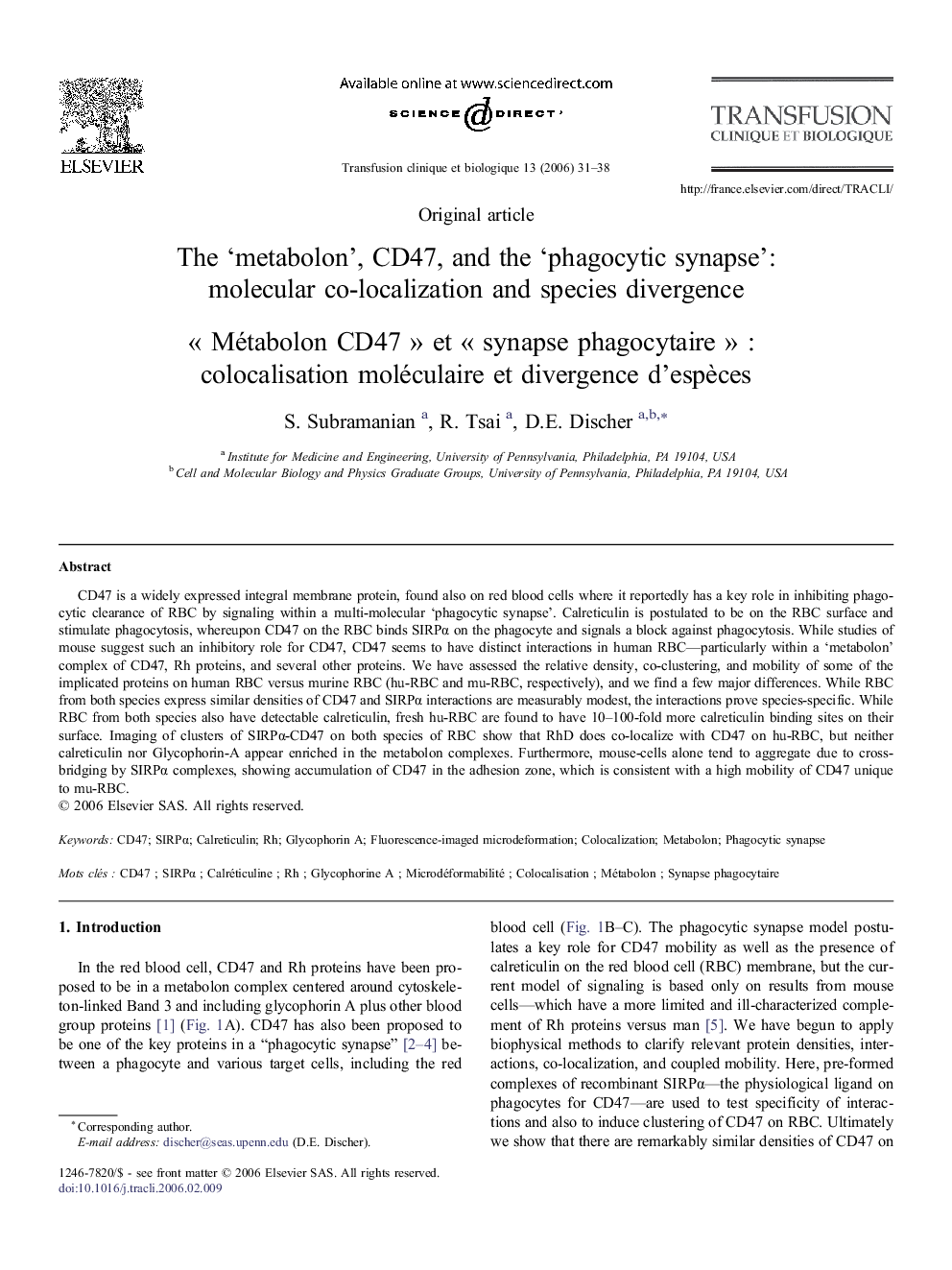| Article ID | Journal | Published Year | Pages | File Type |
|---|---|---|---|---|
| 1105965 | Transfusion Clinique et Biologique | 2006 | 8 Pages |
CD47 is a widely expressed integral membrane protein, found also on red blood cells where it reportedly has a key role in inhibiting phagocytic clearance of RBC by signaling within a multi-molecular ‘phagocytic synapse’. Calreticulin is postulated to be on the RBC surface and stimulate phagocytosis, whereupon CD47 on the RBC binds SIRPα on the phagocyte and signals a block against phagocytosis. While studies of mouse suggest such an inhibitory role for CD47, CD47 seems to have distinct interactions in human RBC—particularly within a ‘metabolon’ complex of CD47, Rh proteins, and several other proteins. We have assessed the relative density, co-clustering, and mobility of some of the implicated proteins on human RBC versus murine RBC (hu-RBC and mu-RBC, respectively), and we find a few major differences. While RBC from both species express similar densities of CD47 and SIRPα interactions are measurably modest, the interactions prove species-specific. While RBC from both species also have detectable calreticulin, fresh hu-RBC are found to have 10–100-fold more calreticulin binding sites on their surface. Imaging of clusters of SIRPα-CD47 on both species of RBC show that RhD does co-localize with CD47 on hu-RBC, but neither calreticulin nor Glycophorin-A appear enriched in the metabolon complexes. Furthermore, mouse-cells alone tend to aggregate due to cross-bridging by SIRPα complexes, showing accumulation of CD47 in the adhesion zone, which is consistent with a high mobility of CD47 unique to mu-RBC.
